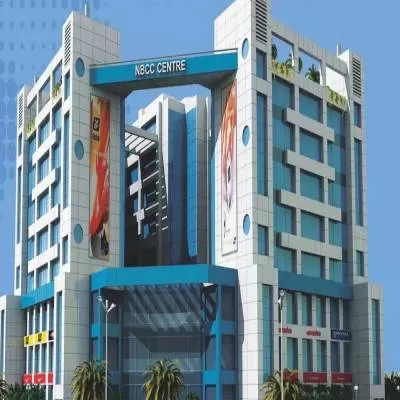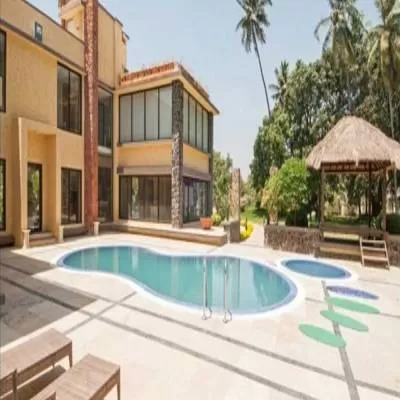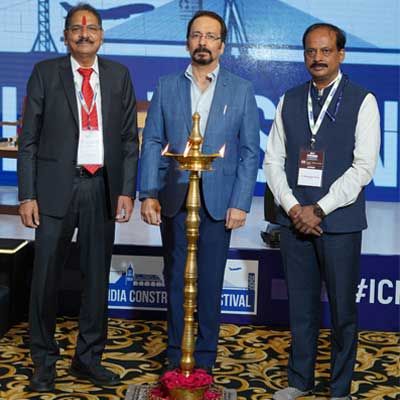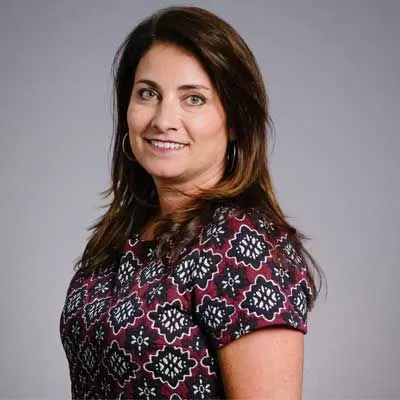- Home
- Technology
- Building Networks
Building Networks
It’s a new, networked world for the Indian construction industry. A clear move towards a more organised setup has been seen in the past five to seven years with the increasing adoption of information technology (IT) solutions to optimise systems and introduce business efficiencies. Topping the list of implementations is enterprise resource planning (ERP) solutions addressing major business processes such as financial accounting, project accounting, contract management, engineering and procurement, marketing, sales and human resources.
Drivers for IT
According to Nilesh Gandhi, Head-ERP Practice, CMC Ltd, “The key drivers for this trend are quicker monetisation, schedule and cost compliance, faster turnaround times, quality compliance and tighter contract managment. Tier-1 ERPs provide a single source of truth to all the departments and this ensures transparency and accountability across the company. The management benefits through actionable information and insight.”
Nakul Chopra, Director, IT Solutions India Pvt Ltd, believes that growing organisations in this vertical are realising that it isn’t possible to manage organisations and multiple projects manually. “They are realising that IT systems make them more agile and help manage finances, understand and service customer requirements better and faster, and develop projects for lower costs. Some organisations have actually recovered the cost of ERP solutions in a couple of months from reductions in pilferage and wastage at sites.”
And Atul Bhandari, Vice President-VE, Industries & Customer Advocacy, SAP India, cites increasing cost pressures as a driver of ERP adoption as well as pressures accompanying market globalisation, an increased emphasis on the capital market, the need to grow bottom lines and manage fast growth (CAGR of more than 30 per cent), and manage rapid changes in the demand for space.
High potential market
The upshot of this burgeoning interest is a growing market for best of breed solutions from leading vendors like SAP and Oracle. According to B Manohar, EPC-Head Construction, Lanco Infratech Ltd, “Over half of the market has been captured by SAP. Foreign investors prefer companies that are using ERP, specifically SAP as a project management/inventory management/remote management software.”
“Tata Housing Development Co Ltd opted for SAP over other options because SAP is a highly secure scalable enterprise solution with workflow and controls at various stages and tight integration with all modules including customer relationship management and business intelligence,” adds Brotin Banerjee, MD & CEO, Tata Housing Development Co Ltd. “SAP provides the quick and easy upgrade of ERP applications with change in global business functionality.”
SAP has four decades of active involvement in the construction industry, supporting over a thousand construction businesses across the globe including India, leveraging SAP for engineering, construction and operations solutions portfolio. Bhandari feels that SAP’s comprehensive range of solutions to manage the entire lifecycle of the construction, engineering and real-estate industry including portfolio management, commercial real-estate management, corporate real-estate management, and facilities management, is the answer Indian companies in this vertical are looking for.
Leading names are adapting this technology to support their business processes. For instance, Hindustan Construction Company has developed a quantity-based budgeting estimation and budgeting tool on the SAP ERP application to eliminate the complexity and resulting errors caused by spreadsheet-based estimation and budgeting. And Oberoi Realty Ltd has established standardised automated business processes and integration across functions to manage its rapid growth, provide insights for effective decision making and achieve company-wide information consistency.
As Gandhi puts it, “Top ERP software brings in global best practices.” But he cautions, “Strong project delivery and change management expertise are essential for successful deployment. Companies like CMC are best positioned to provide the necessary insights for this as true partners of companies looking to leverage ERP systems for high growth.”
Variety of solutions
While big players are going in for globally known solutions or developing their own systems in-house, others are taking their pick from locally developed solutions that best fit their needs. Chopra’s team has handheld sector clients like Assotech, ATS, Bestech and Orris to implement robust systems that help them grow and that are growing with the organisation. “Beginners may be more comfortable trying a solution on Cloud [software as a service] as deployment and managing costs are lower, it is more reliable and it is associated with less risk,” he explains. “If the system works well, it would justify an investment in in-house systems.”
Chopra ends with sound advice: Downturns are the best time to invest in systems as employees have spare time and are more receptive to learning new things.
Case Study 1
Enabling Cross-Enterprise Views
Company: Lanco Infratech Ltd
Software in use: Enterprise Resource Planning SAP standard modules including FICO (Finance & Controlling), PS (Project Systems), MM (Material Management), SD (Sales & Distribution), PP (Production Planning), QM (Quality Management), PM (Plant Maintenance), ETM (Equipment and Tool Management) and HCM (Human Capital Management).
Vendor: SAP
Solution supported functions: Being an ERP, it is supporting the entire lifecycle of the project.
System support: “We have entered into an enterprise support agreement with SAP. Complaints are logged as tickets with varying levels of urgency. High level tickets are responded to within 1 to 2 hours. An internal IT team provides low level (level 1 and 2) support to all these modules. The key to good support is to have a solution manager support desk in place with proper Service Level Agreements and escalations, as we do,” shares B Manohar, EPC-Head Construction, Lanco Infratech Ltd.
Benefits: “We get a single view of the project status. Cost control is exercised at every stage through inbuilt budget controls. Each individual working on a project has a well defined scope of work. Access control lists ensure that the individual works only within this scope. From the perspective of the entire organisation, having a cross-functional integrated environment eliminates data duplication and inconsistencies. A single database spanning sites across multiple geographies serves as a single point of truth for the organisation,” says Manohar.
Case Study 2
Covering real-estate project lifecycle
Company: Tata Housing Development Co Ltd
Software in use: SAP ERP and CRM, ergo modules for finance and controlling, project systems, materials management, real-estate sales, sales and distribution, human resources, customer relationship management
Vendor: Software from SAP India, implementation by CMC Ltd
Solution supported functions: Finance, business development, engineering – project planning and execution, procurement and contracts, marketing and sales, human resources
System support: “SAP provides solution support on an AMC basis while CMC Ltd provides post-implementation technical support,” says Brotin Banerjee, Managing Director & CEO, Tata Housing Development Co Ltd.
Benefits: “We are able to capture and provide a vast range of information from a single source. This includes information pertaining to costs, revenues, resources, project planning and execution, procurement and contracts, marketing campaigns, call centre and lead generation, customer interaction (calls, emails, etc), sales administration, pre-sales and post sales, query/complaint management, organisation structure, and employee master data (employee lifecycle tracking),” elaborates Banerjee. “The implementation essentially covers the lifecycle of real-estate projects including finance, business development, planning, pre-construction, construction, marketing and sales, customer relationship and complaints management, human resources. More pertinently, integrating projects with procurement and finance helps us to control project-related budgets. Procurement approvals have been made online. Also, a central authorised team controls the sales pricing through SAP as well as manages important master data like sales units (flats, villas, shops, etc.) taxation, GL codes, materials, vendors, customers, etc. The sales team can find out the number of unsold flats in a project at the click of a button thanks to the integration of the re-sales module with the CRM module. CRM helps us track the customer interaction history and thus resolve customer queries faster and enhance customer satisfaction.”
Case Study 3
A medley of solutions
Company: Assotech Ltd
Software in use: Building Information Module (BIM) solution, Auto CAD, Far Vision (online ERP System), report on compliance (ROC) solutions, backup and recovery solutions.
Vendor: Gamut Info Systems Ltd (ERP), IT Solutions India Pvt Ltd (backup and recovery), consultant Dr Anil Sawhney of IIT Delhi has provided the BIM solution.
Solution supported functions: BIM is used for the creation of pre-construction 3D virtual construction models. AutoCAD is used for construction design and development. The ERP system helps manage operations. The ROC software is designed to perform different kinds of tax calculation and help fulfil project-related legal formalities.
System support: “We have engaged IT services provider firm, IT Solutions India Pvt Ltd for hardware, networking and backup solutions support,” shares Sanjeev Srivastava, Managing Director, Assotech Ltd. “ERP vendor Gamut Info Systems Ltd and our in-house IT department take care of ERP system-related issues.”
Benefits: “Our name Assotech is derived from Association of Technocrats,” adds Srivastava. “That says a lot about how much we value technology to ensure smooth and efficient operations. Starting from the BIM solution to co-coordinate all structural, architectural and services design elements to avoid any conflict in the design before the execution of the project and facilitate precise coordination between the design and execution teams, each solution plays a role in planning and executing projects and business processes. We particularly wanted an online ERP system to introduce operational efficiencies and higher productivity into day-to-day activities, by enabling anytime, anywhere access. Also, Gamut Info System’s ERP is specially designed for the real-estate sector. We invested in getting an ROC solution tailor-made for our operations as legal compliance is an important aspect of a responsible business.”
Case Study 4
Control over software development
Company: SRS Ltd
Software in use: Microsoft Office Suite and customised sales and accounting software
Vendor: ASG Software (New Delhi) has designed, developed, deployed and maintains the customised sales and accounting software.
Solution supported functions: Sales accounts and financial accounting
System support: “ASG Software offers after-sales support and training in usage. A dedicated in-house support team maintains the IT infrastructure and trains staff on how to use office software to increase productivity and improve communications,” says Narendra Singh Vaid, IT Head, SRS Ltd.
Benefits: “We at SRS Real Estate look upon IT as a facilitator,” adds Vaid. “It has streamlined and automated our sales and accounting processes and has much improved internal communications. IT introduces business efficiencies, accountability and speed in execution. Our sales and accounting package gives us complete control over these functions with automated tax calculations, etc. ASG Software designed and developed the complementary sales and accounting solutions as per our requirement as well as delivered capabilities for our in-house team to modify it as needed, which is a major plus.”
Case Study 5
A leader’s experience
Company: L&T Construction
Software in use: Enterprise information portal (the ERP, EIP), construction enterprise management (CeMa), production decision support system (caters to the needs of factory operations), mobile application and automation, knowledge management (supports the creation, capturing, storage and dissemination of expertise in the form of information and handles design drawings), and messaging and collaboration platform (Microsoft products).
Vendor: Developed in-house. L&T Construction’s Information Systems Department (ISD) team is a dedicated unit that constantly strives to develop the best IT infrastructure for faster response, better services, reduction of manpower in other services, and processing time.
Solution supported functions: The key modules of EIP are supply chain management, customer relationship management, performance measurement system, work order management, financial accounting system, asset management system, project management and planning, budgeting system, payroll module suite, human resource management module, engineering drawings management system, and travel expense management systems module. CeMa is a stand-alone version of the key EIP modules with a focus on construction management. It is deployed at project sites where permanent connectivity is not feasible. It is tightly integrated with EIP to provide appropriate information to the management. The mobile application based on the ERP, EIP mobile, provides users a few HR and administration modules such as leave application/approval, attendance view, car hire/approval, inland air travel/approval, special lunch request, etc, with the idea of improving information access and operational efficiency.
System support: “In-house development and support makes good business sense when the scale of operations is vast,” shares B Srinivasan, Head IT, General Manager, Information Systems Department (ISD), L&T Construction. “To give an idea of our scale of operations in terms of IT infrastructure, ISD manages 12,000 desktops, 2,021 printers, 200 servers, 3,000 laptops, 1,293 UPSs, etc. In-house development means new modules can easily be developed on specific requirements from business units/departments.”
Benefits: “Tightly integrated systems based on L&T’s strong work processes from the manual era and developed using the latest technologies facilitate over 22,000 people to work on about 250 projects at any given time, across India, the Middle East and Southeast Asia,” explains Srinivasan. “L&T’s sophisticated and robust IT infrastructure is the cornerstone in handling such vast and complex project requirements. Speaking of project management and planning, the module dedicated to this function addresses the breakdown of work into packages and further into deliverables, quantity survey, three-months look-ahead planning, progress monitoring versus look-ahead plan, cost estimation using pre-built modules focused on team structure and capacity for tendering project cost evaluation on a continuous basis, subcontract management with quantity control and rate analysis and materials management.”
Case Study 6
Implement concepts through the processes of design, documentation and construction
Company: CHD Developers Ltd.
Software in use: Autodesk Revit Architecture building design software
Vendor: Autodesk
Solution supported functions: It helps the architectural team capture and analyse the concept driving the development of Venue 71, a premium group housing project in Gurgaon valued at Rs 350 crore, and maintain this vision through the processes of design, documentation, and construction.
System support: “Autodesk Revit Architecture works the way architects and designers think and thus not only helps develop higher-quality architectural designs but can also be easily learned,” says Rajesh Joshi, Head Projects, CHD Developers Ltd.
Benefits: “Autodesk Revit Architecture is helping us gain a competitive advantage and improve our scheduling. Creating an information-rich 4D model ensures better project planning. 4D BIM modeling also improves coordination and communication between designers and builders by ensuring the smooth transfer from project planning to execution. Its task-based user interface helps architects track the progress of individual projects and correlates various activities together. When a change is made, it is automatically updated across the project – this keeps designs and documentation coordinated and reliable. The software is set apart by its parametric components that encourage open design formulation as well as provide an opportunity to express design at elementary and increasingly detailed levels, such as for cabinetry. The parametric change engine supports accurate material takeoffs. Delivery time is shortened and cost savings are realised,” adds Joshi.
To share your views or experiences on Construction Software, write in at feedback@ASAPPmedia.com
As more construction and realty companies realise that IT is an investment, not a cost of operations, takers for solutions streamlining business processes are on the rise, discovers Charu Bahri.It’s a new, networked world for the Indian construction industry. A clear move towards a more organised setup has been seen in the past five to seven years with the increasing adoption of information technology (IT) solutions to optimise systems and introduce business efficiencies. Topping the list of implementations is enterprise resource planning (ERP) solutions addressing major business processes such as financial accounting, project accounting, contract management, engineering and procurement, marketing, sales and human resources.Drivers for ITAccording to Nilesh Gandhi, Head-ERP Practice, CMC Ltd, “The key drivers for this trend are quicker monetisation, schedule and cost compliance, faster turnaround times, quality compliance and tighter contract managment. Tier-1 ERPs provide a single source of truth to all the departments and this ensures transparency and accountability across the company. The management benefits through actionable information and insight.”Nakul Chopra, Director, IT Solutions India Pvt Ltd, believes that growing organisations in this vertical are realising that it isn’t possible to manage organisations and multiple projects manually. “They are realising that IT systems make them more agile and help manage finances, understand and service customer requirements better and faster, and develop projects for lower costs. Some organisations have actually recovered the cost of ERP solutions in a couple of months from reductions in pilferage and wastage at sites.”And Atul Bhandari, Vice President-VE, Industries & Customer Advocacy, SAP India, cites increasing cost pressures as a driver of ERP adoption as well as pressures accompanying market globalisation, an increased emphasis on the capital market, the need to grow bottom lines and manage fast growth (CAGR of more than 30 per cent), and manage rapid changes in the demand for space.High potential marketThe upshot of this burgeoning interest is a growing market for best of breed solutions from leading vendors like SAP and Oracle. According to B Manohar, EPC-Head Construction, Lanco Infratech Ltd, “Over half of the market has been captured by SAP. Foreign investors prefer companies that are using ERP, specifically SAP as a project management/inventory management/remote management software.”“Tata Housing Development Co Ltd opted for SAP over other options because SAP is a highly secure scalable enterprise solution with workflow and controls at various stages and tight integration with all modules including customer relationship management and business intelligence,” adds Brotin Banerjee, MD & CEO, Tata Housing Development Co Ltd. “SAP provides the quick and easy upgrade of ERP applications with change in global business functionality.”SAP has four decades of active involvement in the construction industry, supporting over a thousand construction businesses across the globe including India, leveraging SAP for engineering, construction and operations solutions portfolio. Bhandari feels that SAP’s comprehensive range of solutions to manage the entire lifecycle of the construction, engineering and real-estate industry including portfolio management, commercial real-estate management, corporate real-estate management, and facilities management, is the answer Indian companies in this vertical are looking for.Leading names are adapting this technology to support their business processes. For instance, Hindustan Construction Company has developed a quantity-based budgeting estimation and budgeting tool on the SAP ERP application to eliminate the complexity and resulting errors caused by spreadsheet-based estimation and budgeting. And Oberoi Realty Ltd has established standardised automated business processes and integration across functions to manage its rapid growth, provide insights for effective decision making and achieve company-wide information consistency.As Gandhi puts it, “Top ERP software brings in global best practices.” But he cautions, “Strong project delivery and change management expertise are essential for successful deployment. Companies like CMC are best positioned to provide the necessary insights for this as true partners of companies looking to leverage ERP systems for high growth.”Variety of solutionsWhile big players are going in for globally known solutions or developing their own systems in-house, others are taking their pick from locally developed solutions that best fit their needs. Chopra’s team has handheld sector clients like Assotech, ATS, Bestech and Orris to implement robust systems that help them grow and that are growing with the organisation. “Beginners may be more comfortable trying a solution on Cloud [software as a service] as deployment and managing costs are lower, it is more reliable and it is associated with less risk,” he explains. “If the system works well, it would justify an investment in in-house systems.”Chopra ends with sound advice: Downturns are the best time to invest in systems as employees have spare time and are more receptive to learning new things.Case Study 1Enabling Cross-Enterprise ViewsCompany: Lanco Infratech LtdSoftware in use: Enterprise Resource Planning SAP standard modules including FICO (Finance & Controlling), PS (Project Systems), MM (Material Management), SD (Sales & Distribution), PP (Production Planning), QM (Quality Management), PM (Plant Maintenance), ETM (Equipment and Tool Management) and HCM (Human Capital Management).Vendor: SAPSolution supported functions: Being an ERP, it is supporting the entire lifecycle of the project.System support: “We have entered into an enterprise support agreement with SAP. Complaints are logged as tickets with varying levels of urgency. High level tickets are responded to within 1 to 2 hours. An internal IT team provides low level (level 1 and 2) support to all these modules. The key to good support is to have a solution manager support desk in place with proper Service Level Agreements and escalations, as we do,” shares B Manohar, EPC-Head Construction, Lanco Infratech Ltd.Benefits: “We get a single view of the project status. Cost control is exercised at every stage through inbuilt budget controls. Each individual working on a project has a well defined scope of work. Access control lists ensure that the individual works only within this scope. From the perspective of the entire organisation, having a cross-functional integrated environment eliminates data duplication and inconsistencies. A single database spanning sites across multiple geographies serves as a single point of truth for the organisation,” says Manohar.Case Study 2Covering real-estate project lifecycleCompany: Tata Housing Development Co LtdSoftware in use: SAP ERP and CRM, ergo modules for finance and controlling, project systems, materials management, real-estate sales, sales and distribution, human resources, customer relationship managementVendor: Software from SAP India, implementation by CMC LtdSolution supported functions: Finance, business development, engineering – project planning and execution, procurement and contracts, marketing and sales, human resourcesSystem support: “SAP provides solution support on an AMC basis while CMC Ltd provides post-implementation technical support,” says Brotin Banerjee, Managing Director & CEO, Tata Housing Development Co Ltd.Benefits: “We are able to capture and provide a vast range of information from a single source. This includes information pertaining to costs, revenues, resources, project planning and execution, procurement and contracts, marketing campaigns, call centre and lead generation, customer interaction (calls, emails, etc), sales administration, pre-sales and post sales, query/complaint management, organisation structure, and employee master data (employee lifecycle tracking),” elaborates Banerjee. “The implementation essentially covers the lifecycle of real-estate projects including finance, business development, planning, pre-construction, construction, marketing and sales, customer relationship and complaints management, human resources. More pertinently, integrating projects with procurement and finance helps us to control project-related budgets. Procurement approvals have been made online. Also, a central authorised team controls the sales pricing through SAP as well as manages important master data like sales units (flats, villas, shops, etc.) taxation, GL codes, materials, vendors, customers, etc. The sales team can find out the number of unsold flats in a project at the click of a button thanks to the integration of the re-sales module with the CRM module. CRM helps us track the customer interaction history and thus resolve customer queries faster and enhance customer satisfaction.”Case Study 3A medley of solutionsCompany: Assotech Ltd Software in use: Building Information Module (BIM) solution, Auto CAD, Far Vision (online ERP System), report on compliance (ROC) solutions, backup and recovery solutions.Vendor: Gamut Info Systems Ltd (ERP), IT Solutions India Pvt Ltd (backup and recovery), consultant Dr Anil Sawhney of IIT Delhi has provided the BIM solution.Solution supported functions: BIM is used for the creation of pre-construction 3D virtual construction models. AutoCAD is used for construction design and development. The ERP system helps manage operations. The ROC software is designed to perform different kinds of tax calculation and help fulfil project-related legal formalities. System support: “We have engaged IT services provider firm, IT Solutions India Pvt Ltd for hardware, networking and backup solutions support,” shares Sanjeev Srivastava, Managing Director, Assotech Ltd. “ERP vendor Gamut Info Systems Ltd and our in-house IT department take care of ERP system-related issues.” Benefits: “Our name Assotech is derived from Association of Technocrats,” adds Srivastava. “That says a lot about how much we value technology to ensure smooth and efficient operations. Starting from the BIM solution to co-coordinate all structural, architectural and services design elements to avoid any conflict in the design before the execution of the project and facilitate precise coordination between the design and execution teams, each solution plays a role in planning and executing projects and business processes. We particularly wanted an online ERP system to introduce operational efficiencies and higher productivity into day-to-day activities, by enabling anytime, anywhere access. Also, Gamut Info System’s ERP is specially designed for the real-estate sector. We invested in getting an ROC solution tailor-made for our operations as legal compliance is an important aspect of a responsible business.”Case Study 4Control over software developmentCompany: SRS LtdSoftware in use: Microsoft Office Suite and customised sales and accounting softwareVendor: ASG Software (New Delhi) has designed, developed, deployed and maintains the customised sales and accounting software.Solution supported functions: Sales accounts and financial accountingSystem support: “ASG Software offers after-sales support and training in usage. A dedicated in-house support team maintains the IT infrastructure and trains staff on how to use office software to increase productivity and improve communications,” says Narendra Singh Vaid, IT Head, SRS Ltd.Benefits: “We at SRS Real Estate look upon IT as a facilitator,” adds Vaid. “It has streamlined and automated our sales and accounting processes and has much improved internal communications. IT introduces business efficiencies, accountability and speed in execution. Our sales and accounting package gives us complete control over these functions with automated tax calculations, etc. ASG Software designed and developed the complementary sales and accounting solutions as per our requirement as well as delivered capabilities for our in-house team to modify it as needed, which is a major plus.”Case Study 5A leader’s experience Company: L&T ConstructionSoftware in use: Enterprise information portal (the ERP, EIP), construction enterprise management (CeMa), production decision support system (caters to the needs of factory operations), mobile application and automation, knowledge management (supports the creation, capturing, storage and dissemination of expertise in the form of information and handles design drawings), and messaging and collaboration platform (Microsoft products). Vendor: Developed in-house. L&T Construction’s Information Systems Department (ISD) team is a dedicated unit that constantly strives to develop the best IT infrastructure for faster response, better services, reduction of manpower in other services, and processing time.Solution supported functions: The key modules of EIP are supply chain management, customer relationship management, performance measurement system, work order management, financial accounting system, asset management system, project management and planning, budgeting system, payroll module suite, human resource management module, engineering drawings management system, and travel expense management systems module. CeMa is a stand-alone version of the key EIP modules with a focus on construction management. It is deployed at project sites where permanent connectivity is not feasible. It is tightly integrated with EIP to provide appropriate information to the management. The mobile application based on the ERP, EIP mobile, provides users a few HR and administration modules such as leave application/approval, attendance view, car hire/approval, inland air travel/approval, special lunch request, etc, with the idea of improving information access and operational efficiency.System support: “In-house development and support makes good business sense when the scale of operations is vast,” shares B Srinivasan, Head IT, General Manager, Information Systems Department (ISD), L&T Construction. “To give an idea of our scale of operations in terms of IT infrastructure, ISD manages 12,000 desktops, 2,021 printers, 200 servers, 3,000 laptops, 1,293 UPSs, etc. In-house development means new modules can easily be developed on specific requirements from business units/departments.”Benefits: “Tightly integrated systems based on L&T’s strong work processes from the manual era and developed using the latest technologies facilitate over 22,000 people to work on about 250 projects at any given time, across India, the Middle East and Southeast Asia,” explains Srinivasan. “L&T’s sophisticated and robust IT infrastructure is the cornerstone in handling such vast and complex project requirements. Speaking of project management and planning, the module dedicated to this function addresses the breakdown of work into packages and further into deliverables, quantity survey, three-months look-ahead planning, progress monitoring versus look-ahead plan, cost estimation using pre-built modules focused on team structure and capacity for tendering project cost evaluation on a continuous basis, subcontract management with quantity control and rate analysis and materials management.”Case Study 6Implement concepts through the processes of design, documentation and constructionCompany: CHD Developers Ltd. Software in use: Autodesk Revit Architecture building design software Vendor: AutodeskSolution supported functions: It helps the architectural team capture and analyse the concept driving the development of Venue 71, a premium group housing project in Gurgaon valued at Rs 350 crore, and maintain this vision through the processes of design, documentation, and construction.System support: “Autodesk Revit Architecture works the way architects and designers think and thus not only helps develop higher-quality architectural designs but can also be easily learned,” says Rajesh Joshi, Head Projects, CHD Developers Ltd. Benefits: “Autodesk Revit Architecture is helping us gain a competitive advantage and improve our scheduling. Creating an information-rich 4D model ensures better project planning. 4D BIM modeling also improves coordination and communication between designers and builders by ensuring the smooth transfer from project planning to execution. Its task-based user interface helps architects track the progress of individual projects and correlates various activities together. When a change is made, it is automatically updated across the project – this keeps designs and documentation coordinated and reliable. The software is set apart by its parametric components that encourage open design formulation as well as provide an opportunity to express design at elementary and increasingly detailed levels, such as for cabinetry. The parametric change engine supports accurate material takeoffs. Delivery time is shortened and cost savings are realised,” adds Joshi.To share your views or experiences on Construction Software, write in at feedback@ASAPPmedia.com
























